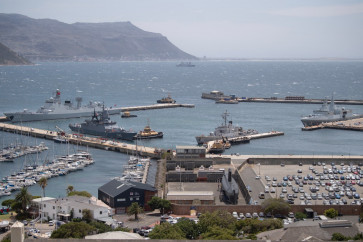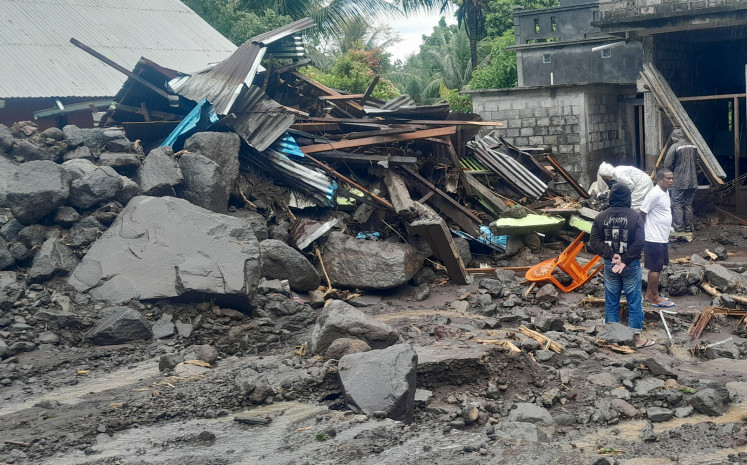Popular Reads
Top Results
Can't find what you're looking for?
View all search resultsPopular Reads
Top Results
Can't find what you're looking for?
View all search resultsIndonesia and Japan work together on sea turtle conservation
Without solid conservation efforts, sea turtles will come to extinction very soon due to the rampant illegal wildlife trade and natural predators
Change text size
Gift Premium Articles
to Anyone
W
ithout solid conservation efforts, sea turtles will come to extinction very soon due to the rampant illegal wildlife trade and natural predators.
In Indonesia, two sea turtle species, the Hawksbill turtle (Eretmochelys imbricata) and Leatherback turtle (Dermochelys coriacea), are critically endangered due to extensive hunting.
The population of Hawksbill turtle in the country has declined by 80 percent partly due to excessive exports of their carapaces to Japan, which began in the 1950s. Conditions deteriorated with illegal turtle egg gathering in the 1970s.
“For 29 years from 1961, Japan has imported carapaces taken from 200,000 Hawksbill turtles in Indonesia,” Everlasting Nature of Asia (ELNA) executive director, Hiroyuki Suganuma, told a recent discussion on the conservation of sea turtles held by the Japan Foundation.
During that time, Japan was facing sharp criticism from the global community for its involvement in the slaughter of thousands of Hawksbill turtles. Responding to the criticisms, Japan agreed in 1992 to ban the importation of turtle shells from Indonesia.
In Japan, shell from the turtles’ backs was used for handicrafts.
“We don’t blame the craftsman or the carapace trader and importer for the serious decline of the Hawksbill turtle population in Indonesia. Such a horrible situation really came from the Japanese government’s attitude towards the illegal shell trade. They kept silent or pretended that they didn’t know anything about the illegal trade which is a notoriously cruel business,” Suganuma said.
Even after banning the importation of carapace from Indonesia, the Japanese government did not do anything to actually stop the activity.
“This is why non-governmental organizations, including ELNA, take the lead in the sea turtle conservation, working with local partners to save endangered species,” Suganuma added.
ELNA, a Kanagawa-based non-profit organization established in 1999, aims to conserve marine life and habitats in the Asian region. Currently, ELNA focuses on conservation of sea turtles and whales in Japan and Indonesia.
Jointly working with the ELNA since 1997, the Indonesia Sea Turtles Foundation (YPLI) has protected 10,770 nesting sites of Hawksbill turtles and 7,008 nesting sites of Green turtles (Chelonia mydas) in conservation areas on five islands: Segama Besar (East Lampung), Pesemut (East Belitung), Momperang (East Belitung), Kimar (Belitung), and Penambun (West Kalimantan).
“We focus on the Hawksbill turtle as it is under threat from hunting. The Hawksbill population continues to decline due to the massive exportation of their carapace to Japan,” said Abdul Wahid, the YPLI’s conservationist.
In total 766,834 juveniles, commonly called tukik, have been released to their marine habitats.
Apart from the Hawksbill turtle, the YLPI under cooperation with its Japanese counterpart, ELNA, also make conservation efforts to help save the Leatherback turtle, another threatened sea turtle, from extinction.
In 2000, the YLPI began Leatherback turtle conservation efforts at Yamursba Medi beach in Tamrau-Sorong regency, Papua, followed by Wermon beach in 2005 and Mubrani beach in Manokwari regency in 2007.










